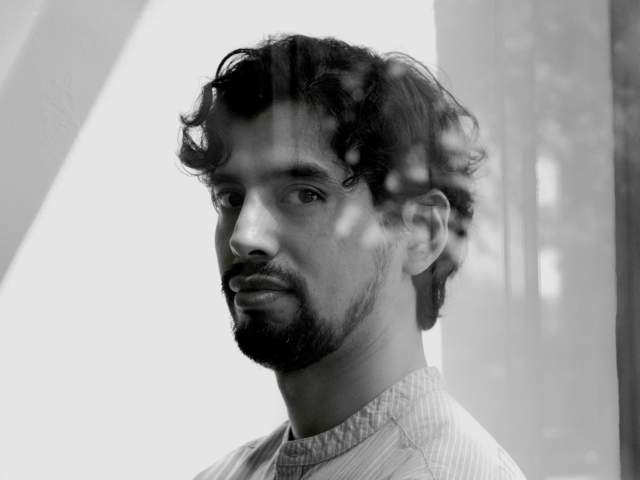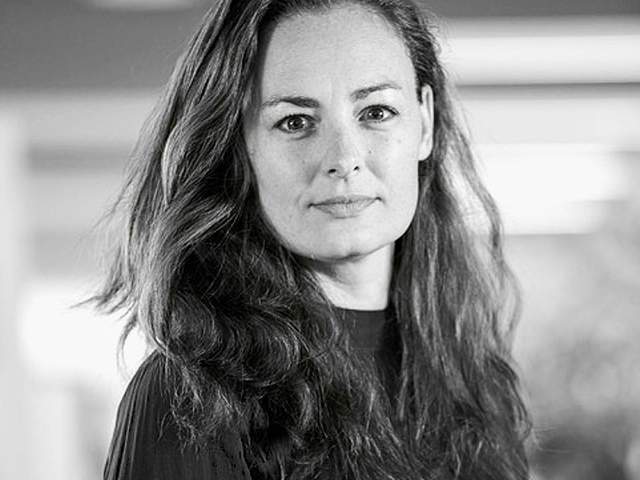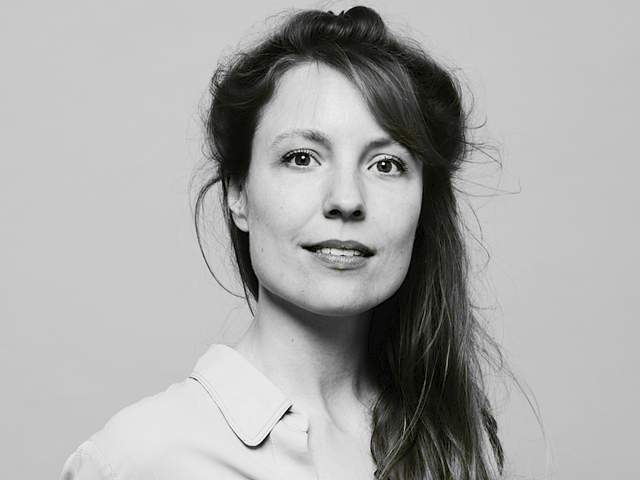Columns
Design United, the 4TU research centre for design, enhances the innovative strength of the Dutch creative industry by bridging the gap between design research and the design community.


Decentral Intelligence Agency: Books as Decentering Strategies
Interspecies Library is an independent archive dedicated to the curation of contemporary artists’ books exploring interspecies futures: the manifold unseen and potential relationships that flourish among different lifeforms. A wide variety of printed materials are housed in the archive, including books, pamphlets, zines, posters, ephemera, and other artifacts, which are sourced from artists and independent publishers around the world.

A Design Critique from Within the Healthcare System

Imagining our Digital Futures
Relations not Functions
Designing for the future has an allure - why design for the way things are now when we can be bold, experiment with, and paint pictures of worlds just on the verge of becoming? There's a thrill to making something new, probing the edges of possibility by asking not "How might we?" but "What might be?". So, why is this important? The things we work with are more fluid, more interconnected, and more continuously in flux than ever before. The purpose of technologies is only figured out after they've been made and released: mobile phones are only useful for the ecosystem of services and interactions that spring up around them; the capabilities of new AI systems are only discovered through investigation, often in public, as communities experiment to see what's possible - "does it do this?". At the same time, we can recognise that the value of design is not only in making better systems but in investigating the possible worlds that might be made. This is what Pierce would call 'frictional' design: accelerating current trends, exploring counterfactuals, creating space to imagine how the world might be different, and shaping the direction of travel.
What is Health? Philosophical perspectives on harmony in designing for wellbeing
A ritual central to science is the PhD defence. At Leiden University, the oldest university in the Netherlands, this ceremony unfolds in an ornate auditorium where stained glass windows cast coloured light onto centuries-old wood panels. Then picture a procession of senior scholars, each adorned in black robes and peculiar hats as if plucked from a medieval painting.
Design for Human Flourishing
What makes people truly happy? This question has gained new significance in a world that’s rethinking the limits of materialism. As economic expansion continues to raise social and environmental concerns, designers are looking for a deeper sense of purpose. Many have embraced a modern form of humanism as a guide to creating designs that foster human capabilities. This philosophy, rooted in Socratic thought, advanced by Abraham Maslow, and reinvigorated by the positive psychology movement, adapts a holistic view on human existence, emphasizing the potential for human self-actualization—the flourishing of individuals and communities.
On staying open to bugs, shark bites and other humbling encounters
Doenja Oogjes
Social Justice Futures: Resistance, Belonging and Becoming
The idea of 'becoming ' is essential. We need to open up the meaning of the identity concept towards relations with a multiplicity, with others. Through opposition to the idea of identity as something completely closed, already formed, and static. We are subjects under construction; we are always becoming something. Rosy Braidotti, 2019, CCCBLAB (Dossier, Post-humanism)
“Design Refusal” and the Limits of Co-creation
“Design refusal” is an emerging movement in design research and practice that places social justice at the centre of design processes. It raises broader questions about the limits of co-creation and public participation in design. Design refusal has largely foregrounded the responsibility and agency of designers and engineers to disrupt potentially harmful projects within powerful institutions. One key example of design refusal is the collective action of software engineers at Google, where they mobilised against collaboration with the US military (Robinson et al., 2024). Although these acts of refusal offer important lessons, design scholars highlight how focusing on refusal within powerful institutions creates a flawed theory of change which relies on “the goodwill of elites, rather than supporting people’s agency to shape their relationships to data regimes” (Zong and Matias, 2024: 2).
Editorial Digital Future
Changing Gears
Editorial Equal Society
Changing Gears
Editorial Health & Wellbeing
Changing Gears
Editorial Thriving Planet
Changing Gears
Editorial Living Environments
Changing Gears
Climate Futures Now!
Design is inherently a future-oriented practice. But how can we envision desirable futures on a troubled planet? Does society have a "crisis of imagination"? And if so, can designers help us both speculate about practices of tomorrow, and inspire us to take action? Climate Futures Now! brings together projects from the 4TU community, via the Design United Expo and an afternoon Dialogues session at DDW23.
Transitions Otherwise: Design for AI in Practice and Education and apocalypse postponed
Promises of AI and Opportunities for Design.
Getting Our Political Economy Back
Last year in this space, Nolen Gertz wrote,
Coding the Soul, Decoding the Machine
Computers are ubiquitous, surrounding and infiltrating almost every aspect of our daily lives. Everything from our coffee makers to our smartphones operates on code. Yet our interactions with machines and programs remain to the largest extents bound to pre-defined routines or interfaces.
How to be a designer in the world of (bio)materials?
Our material world is in a state of flux. As we all are aware by now, the global overconsumption of natural resources can’t continue. The ecological problems caused by material production, use, and disposal need to be solved urgently.
Metamodern making in a textile topology
Making materials and textiles in the postdigital era involves a synthesis of multiple, multi-species skills and mediums. The agency of fibre, substance, algorithm, and AI work in a joint endeavour with human and non-human participants in contexts of the future everyday. An everyday that is changed by these evolving practices. How we live and make tomorrow is already being constituted by how we are living and making today.
De-centering the human
The last years has seen a great surge of more-than-human (MTH) research and design. The field has explored ways of understanding, investigating, and imagining the world anew by going beyond human perception and cognition. Building on a strong theoretical ground of post-humanism, these pioneering works paved the way for studying why there is a need and what it means to have a MTH approach in design. Now it is time to connect these theories to MTH practice and develop our designerly ways of framing the scope and “doing” MTH design.
Unsuspecting AI author caught in debate and tricked into putting humans first
Mathias Funk, Sara Colombo (TUE), Philip van Allen (TUD) and Cristina Zaga (UT)
Repetitive answers and circular arguments: entangling AI in a conversation on design
Sara Colombo and Mathias Funk - Eindhoven University of Technology
Knit x Code
Marie-Louise Stisen Kjerstein Sørensen, Bjarke Vognstrup Fog, Line Have Musaeus and Marianne Graves Petersen
Design for happiness
Ambra Trotto (RISE) and Caroline Hummels (TUE)
Politics in Design
Annemiek van Boeien - Delft University of Technology
The Contestation Café
Robert Collins - Umeå University
Becoming more than human - Shifts for designing with
Elisa Giaccardi - Delft University of Technology
The Politics of Design and the Design of Politics
Nolen Gertz - University of Twente
Connecting Pasts, Presents, and Design Futures
Dan Lockton - Eindhoven University of Technology
Designing <intentionally blank> Bees
Ron Wakkary - Eindhoven University of Technology
Embedded Designers uncovered
Dieuwertje de Wagenaar (WUR) & Milene Gonçalves (TUD)
Protein Transition
Remco de Kluizenaar - Wageningen University & Research
Design with and for Changing Things
Heather Wiltse - Umeå Institute of Design (Umeå University)
Blended-ness and the future of connected interactions
Himanshu Verma - Delft University of Technology
A Data-Driven Peek into “Living with” Living Artefacts
Bahar Barati - Eindhoven University of Technology
Entanglement Design
Jelle van Dijk - University of Twente
Even responsible designers are only human
Geke Ludden - University of Twente
The hidden crisis
Jeroen van Erp - Delft University of Technology
Designers, please guide us!
Paul Hekkert - Delft University of Technology
HomeColumns



